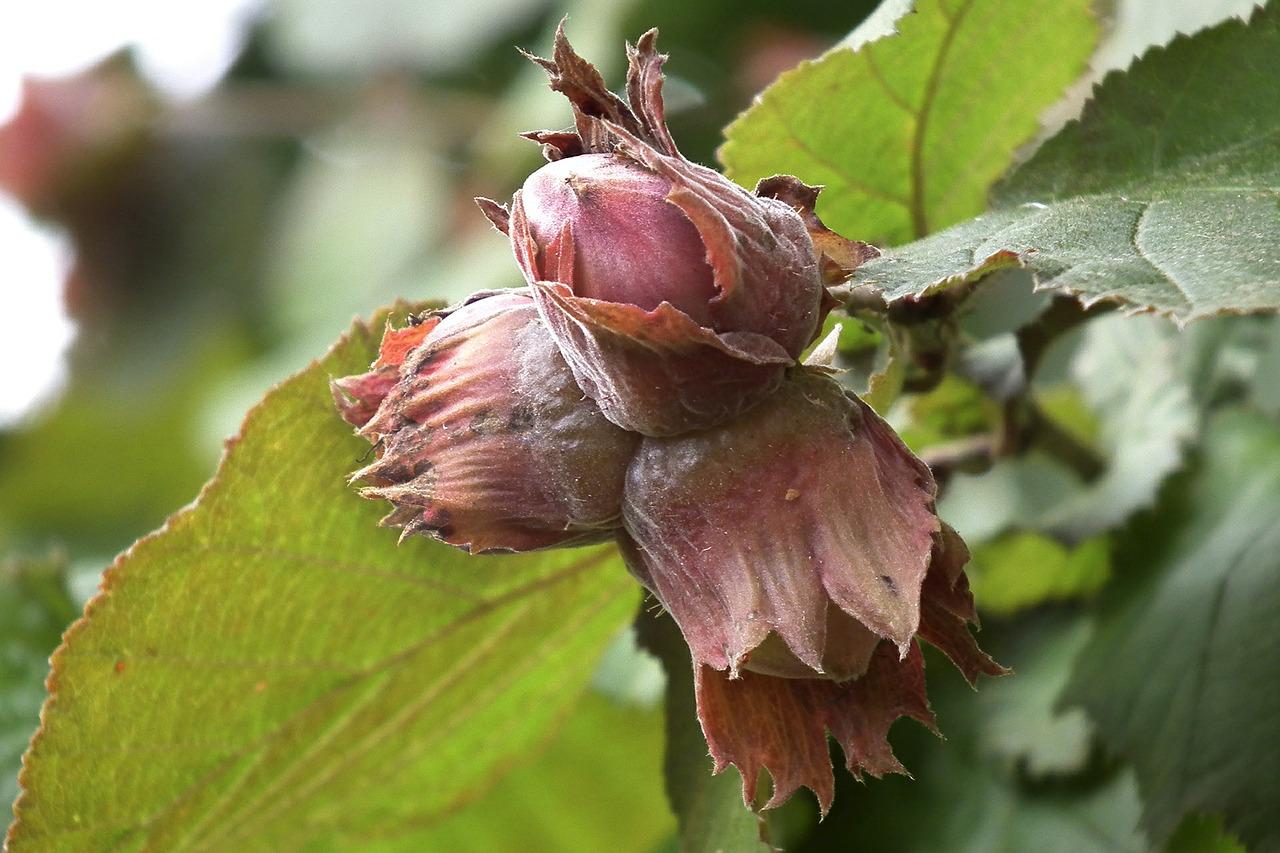Brown Rot of Hazelnut Fruit
Monilia laxa
This disease is becoming an increasing problem in hazelnut orchards, caused by fungi from the Monilia genus.
Affected Part: Fruit
Pathogens: Fungi from the genus Monilia (M. laxa, M. fructigena).
Symptoms: Monilia laxa, less commonly M. fructigena, causes irregular light brown to chestnut spots on the pericarp (husk) that spread to cover the entire fruit and bracts. Early-infected fruits fall off, while some remain on the branch until late autumn.
Biology of the Disease: The fungus survives on infected fruits for at least one growing season. On infected fruits on the ground, conidia are produced after heavy wetting and when temperatures rise above 10°C, serving as a source of primary infections. It is believed that these are the main source of infections over a prolonged period since sporulation rarely occurs on fruits remaining in the canopy due to lack of moisture.
Protection Against Brown Rot of Hazelnut Fruit: Collecting and burning rotten fruits is a good measure for home gardens. It is also recommended to plow under infected fruits. Since the mentioned Monilia species cannot penetrate undamaged tissue, controlling insects (hazelnut weevil, bugs) that damage the fruit is very important. Only then can some effect from fungicide application be expected. Fungicides based on pyraclostrobin are effective against Monilia species. Broad-spectrum fungicides should be used as Monilia species are not the only cause of fruit rot. Protection should be carried out when the first signs of insect feeding damage are observed, usually in late May and early June. After hail, protection should be carried out as soon as possible, no later than 40 hours after the hail.
Rot of Hazelnut Kernels
Nematospora coryli
This disease is widespread in Croatia but is often confused with symptoms caused by Monilia. Bugs play a significant role in the etiology of this disease, causing two types of symptoms.
Affected Part: Fruit
Pathogen: Fungus Nematospora coryli.
Symptoms: After infection, hazelnuts begin to turn yellow from the top. Then that part of the shell (woody pericarp) turns brown. Changes also occur inside the fruit. Changes in the kernel depend on the development stage at which the infection occurred. When bug punctures occur early (May, June) during the kernel’s formation, early kernel damage (traumatic abortion) occurs, preventing further development, turning the kernel black, causing necrosis, rot, and drying, leaving a void inside the shell and kernel. Brown drops form inside the shell. However, if seed formation is halted due to non-parasitic factors, drops do not form. In the second case, bugs puncture the fruit when the kernel has already formed. The kernel turns yellow or brown, with a sour, unpleasant taste, a condition known as “cimiciato” (Italian for “bug”). This renders the kernel worthless. The inside of the fruit can be infected without visible changes on the fruit’s surface.
Biology of the Disease: The fungus lives on hazelnut organs as a saprophyte, reproducing by budding like yeast. Bugs transmit Nematospora coryli propagules during fruit puncture, causing mold and kernel decay. The fungus develops at temperatures between 10 and 37°C.
Protection Against Rot of Hazelnut Kernels: Infection of fruits usually occurs through wounds, so all measures that reduce the possibility of fruit damage also reduce the chance of infection. Controlling bugs and other insects that damage the fruit reduces the risk of this disease.
Powdery Mildew of Hazelnut
Phyllactinia guttata
Powdery mildew of hazelnut is the first pathogen recorded on hazelnut in Croatia. It causes damage not only to hazelnuts but also to mulberry, pistachio, and many other forest species. Damage is usually insignificant if powdery mildew occurs late in the growing season. However, when the disease appears earlier, before harvest, the damage can be significant enough to justify protection measures.
Affected Part: Leaves
Pathogen: Fungus Phyllactinia guttata.
Symptoms: Symptoms usually appear from mid-August to October. In wetter years and depressions, symptoms may appear earlier. Dirty white zones formed by mycelium and oidium develop on the upper leaf surface. The leaf in these areas may become necrotic. On the same spot, but on the leaf underside, a loose, ashy coating gradually spreads and may cover the entire underside. Light brown cleistothecia form within the mycelium network, eventually turning black. Necrosis of infected leaf parts may occur, and if a large portion of the leaf blade is infected, the entire leaf may dry out.
Biology of the Disease: The fungus overwinters as cleistothecia. In spring, cleistothecia rupture, releasing ascospores that cause primary infections. The fungus can also overwinter as mycelium in buds, providing another source of primary infections. Oidia are responsible for primary and secondary infections. After the appearance of the first symptoms and oidium, the wind spreads oidium to new leaves throughout the growing season. Moisture levels of 70 to 80% favor parasite development.
Protection Against Powdery Mildew of Hazelnut: Fungicides based on penconazole, sulfur, and meptyldinocap have proven effective during severe infestations.
Bacterial Diseases of Hazelnut
Xanthomonas arboricola pv. corylina and Pseudomonas syringae pv. avellanae
The symptoms of the two bacterial diseases that occur on hazelnut are quite similar. One is known as hazelnut bacterial blight (Xanthomonas arboricola pv. corylina), and the other as hazelnut bacterial canker (Pseudomonas syringae pv. avellanae). These diseases attack all parts of the plant and appear as dark spots, causing cankers on branches. A characteristic bacterial exudate appears at infected sites. These diseases result in the wilting of individual parts of the plant, sometimes even entire trees. The occurrence of these diseases is more intense in wet and rainy years.
Protection Against Bacterial Diseases of Hazelnut: Infection can be reduced by removing infected parts of the plant (branches), but this is not enough. Copper-based fungicides should be applied before and at the start of the growing season when buds are opening. If necessary, another treatment can be carried out in late summer and early autumn with organic fungicides based on metiram and captan. There are no registered fungicides for these diseases in Croatia.













































